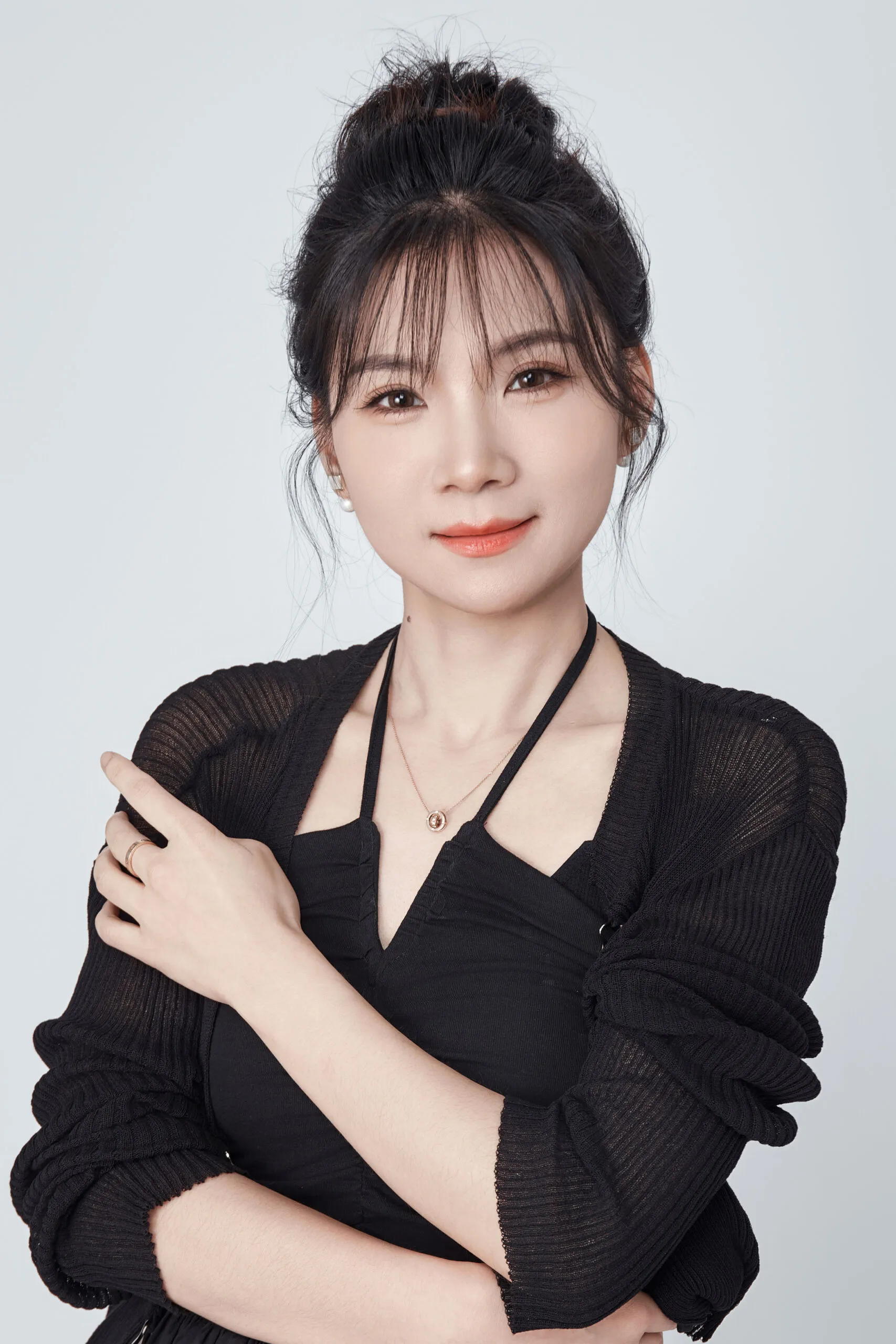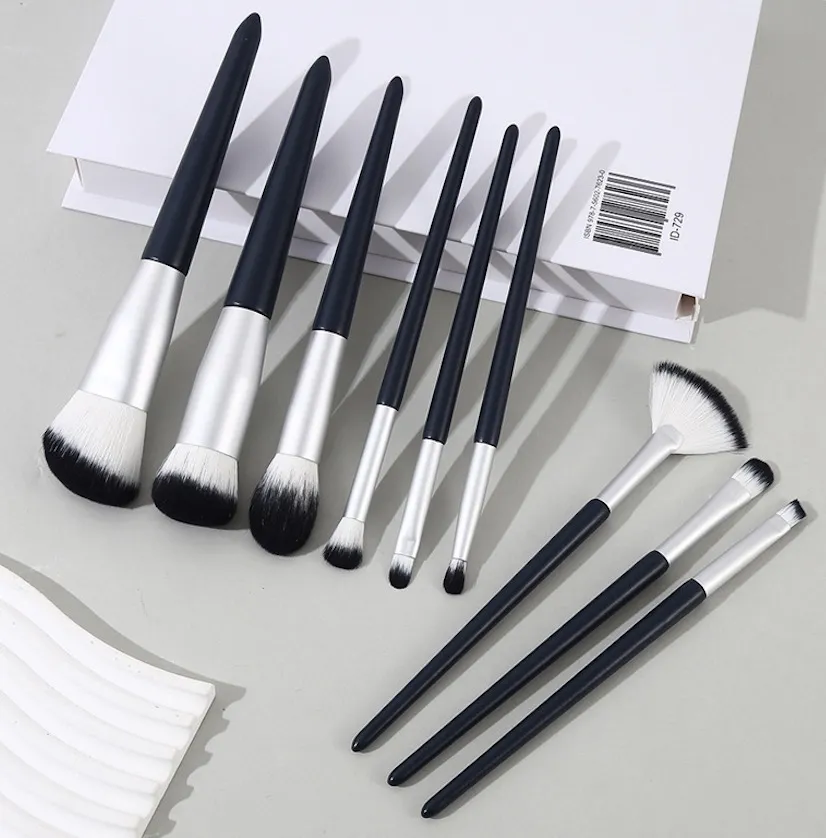Choosing the right materials for your makeup brushes feels overwhelming. A wrong move can lead to poor performance and unhappy customers. I’ll guide you through every component.
Makeup brushes are made from three main parts. First, the bristles, which are either natural animal hair1 or synthetic fibers. Second, the ferrule, a metal band of aluminum or copper. Third, the handle, made from wood, plastic, or bamboo. Each part affects performance and brand identity.
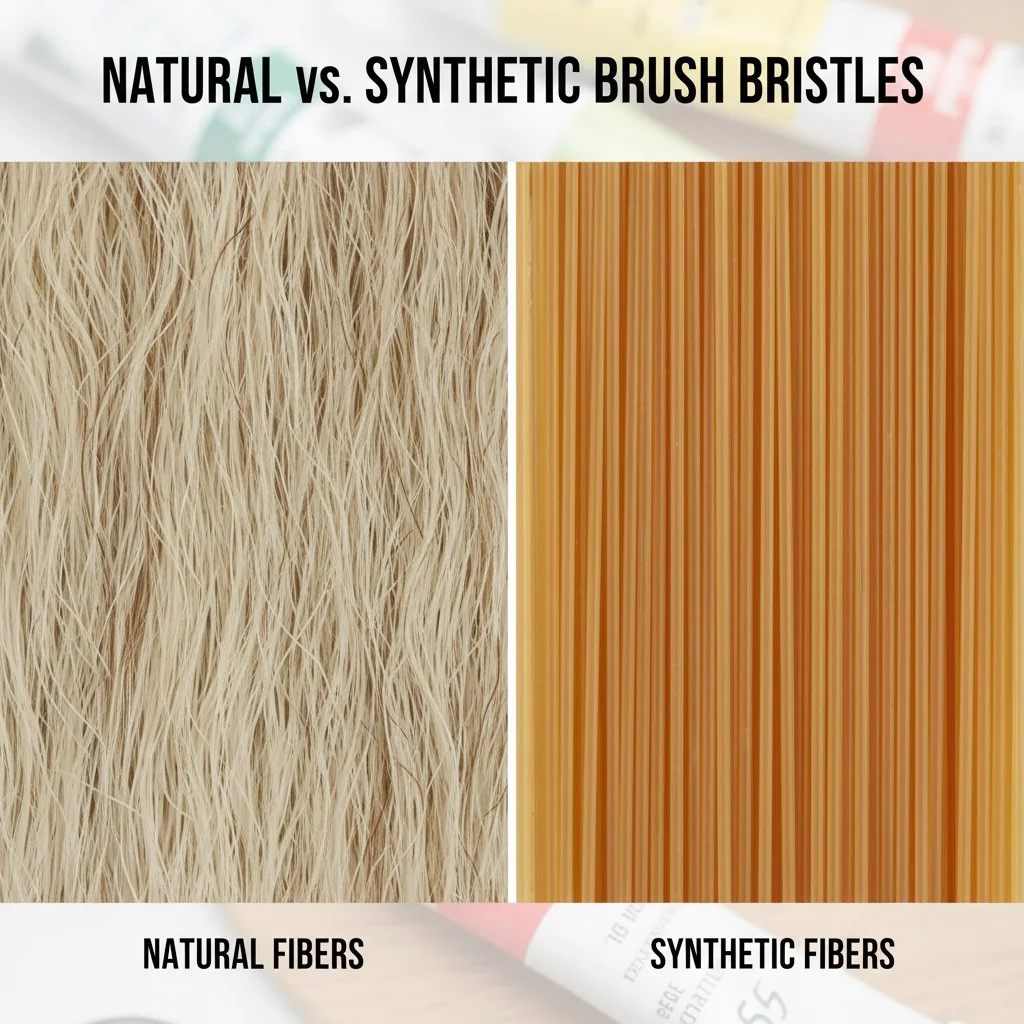
When I first started working on a brush factory floor, I saw how these small material choices made a huge difference in the final product. A brush isn’t just a tool; it’s a promise to your customer. For brand founders, knowing what goes into your brushes is the first step to building a line that you can be proud of. It’s how you ensure the quality you promise is the quality you deliver. Let’s break down each part so you can make informed decisions for your brand.
All makeup brushes are vegan.Faux
Only brushes made with synthetic bristles (like nylon or taklon) are vegan. Brushes made with natural hair from animals like goats, squirrels, or sables are not vegan.
The material of a makeup brush affects how it applies makeup.Vrai
Yes, natural bristles with cuticles are great for picking up powders, while smooth synthetic bristles excel at applying liquids and creams without absorbing the product.
Bristles Decoded: Natural Animal Hair vs. Modern Synthetics?
Choosing between natural and synthetic bristles is a critical decision. Pick the wrong one, and your customers might get a streaky application or frustrating shedding. Let’s find the right fit.
Natural bristles, like goat or squirrel hair, have tiny cuticles that excel at picking up and blending powder products. Modern synthetic fibers2, like nylon and taklon, are smooth, non-porous, and perfect for applying liquids and creams. They are also 100% vegan and cruelty-free.
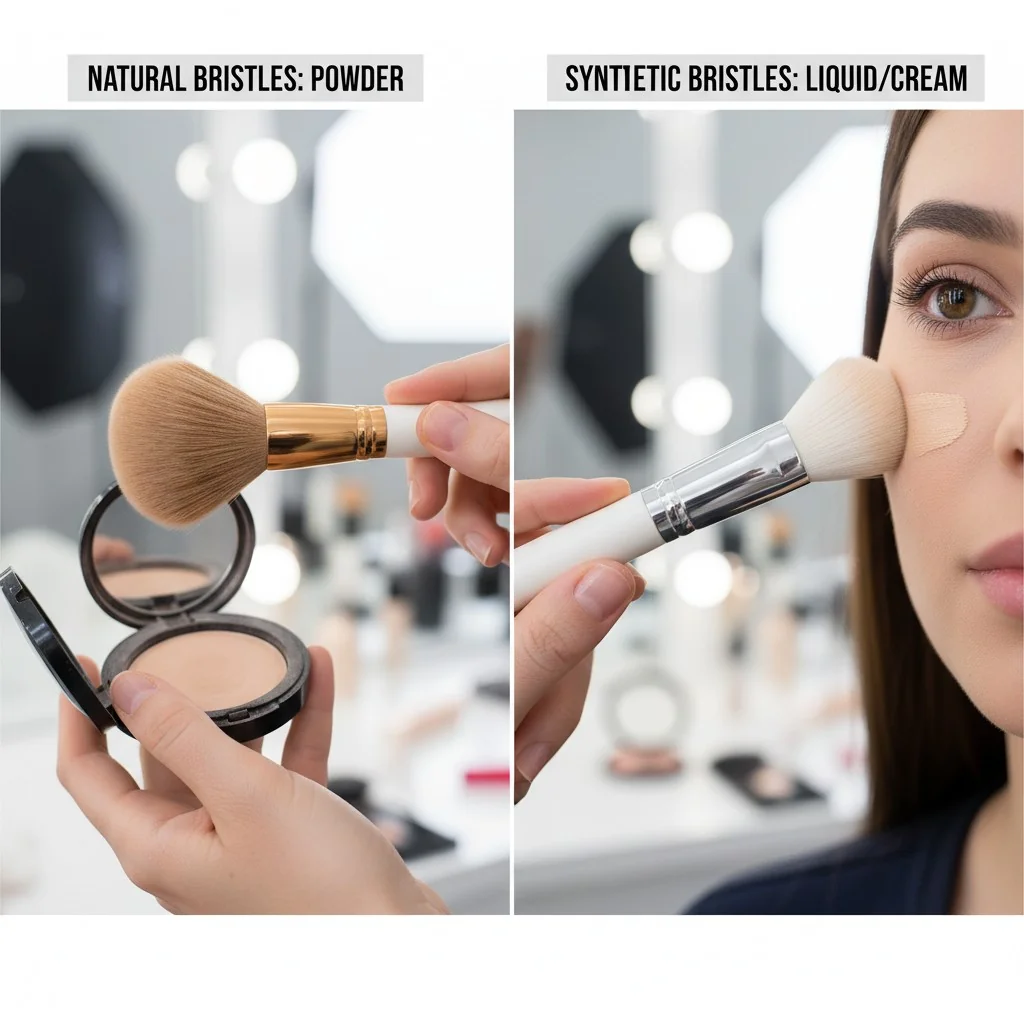
I’ve handled thousands of brushes, and the feel of the bristles is everything. The choice you make here directly impacts your product’s performance and your brand’s ethical stance. It’s a balance between tradition and innovation.
Natural Hair Bristles: The Powder Professionals
Natural bristles come from animal hair. Their surfaces have cuticles, just like human hair. These cuticles are fantastic for grabbing and holding onto fine powders, like setting powder or eyeshadow. This allows for a soft, diffused application that’s hard to replicate. However, they can be harder to clean, may trigger allergies, and raise ethical questions for many brands today.
| Bristle Type | Best For | Key Feature |
|---|---|---|
| Goat Hair | Powder, Bronzer, Blush | Soft, fluffy, and great for blending |
| Squirrel Hair | Eyeshadow, Highlighter | Extremely soft and delicate for sheer application |
| Sable/Kolinsky | Eyeliner, Lip Color | Firm, precise point for detailed work |
| Pony/Horse Hair | Blending, Eyeshadow | Stiffer than goat, good for firm blending |
Synthetic Fibers: The Liquid & Cream Masters
Synthetic fibers like nylon, taklon, and polyester are man-made. Their strands are smooth and have no cuticles. This means they don’t absorb liquids or creams, so more product ends up on the face, not in the brush. This makes them more hygienic, easier to clean, and ideal for foundation or concealer. Early synthetics were stiff, but today’s next-gen fibers are engineered to be incredibly soft, mimicking the feel of luxury natural hair while being completely cruelty-free3. This is why so many premium brands are now launching fully synthetic lines.
Natural bristles are always better than synthetic ones.Faux
This is a common myth. While natural bristles are excellent for powders, high-quality synthetic fibers now outperform them for liquid and cream applications and can be just as soft.
Synthetic brushes are easier to clean.Vrai
Because synthetic fibers are non-porous, they don't absorb makeup, oils, or bacteria as deeply as natural hair. This makes them simpler to wash and quicker to dry.
Ferrules and Finishes: What Holds Your Brush Together?
The metal part of a brush might seem like a small detail. But a cheap, poorly made ferrule4 leads to shedding and a wobbly head, which can destroy customer trust.
The ferrule is the metal band that connects the bristles to the handle. It’s usually made of lightweight aluminum or heavier, premium-feeling copper or brass. The finish, like anodizing or plating, protects it from rust and adds to the brush’s look and durability.
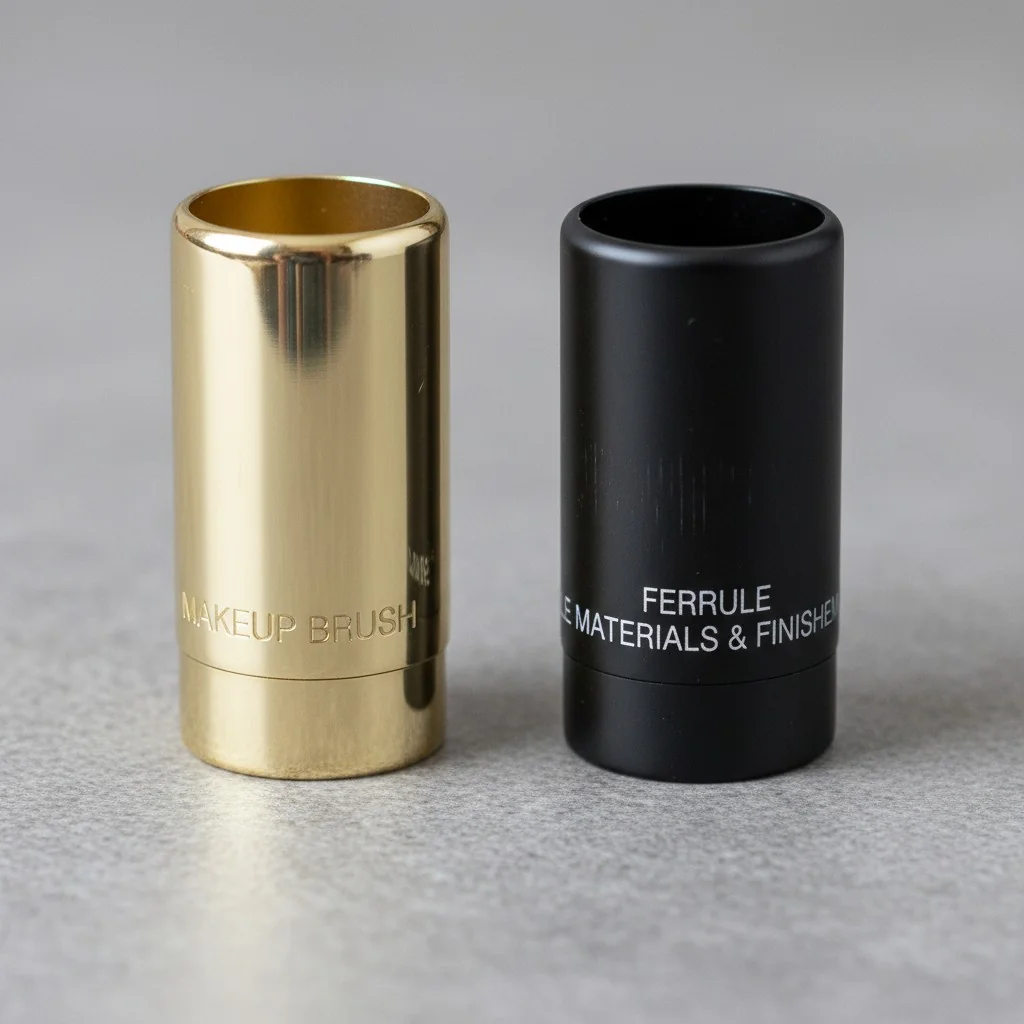
In the factory, I learned that the ferrule is the backbone of the brush. We would run tests just on the ferrule’s crimping strength because if that fails, the whole brush fails. For a brand owner, choosing the right ferrule is an investment in your product’s lifespan and perceived value.
Aluminum: The Versatile Workhorse
Aluminum is the most common material for ferrules. It’s lightweight, corrosion-resistant, and cost-effective, making it a great choice for many brush lines. Its surface is perfect for anodizing, a process that can create a durable, colored finish in matte or shiny textures. This allows for great customization to match your brand’s colors. It’s a reliable choice for core collections and large brush sets where cost-performance is key.
Copper & Brass: The Luxury Signal
For hero products or luxury lines, copper or brass ferrules are the way to go. They are heavier than aluminum, giving the brush a substantial, high-end feel in the hand. These metals are typically plated with chrome or nickel. This plating provides a beautiful, mirror-like shine and makes them extremely durable and resistant to corrosion. The extra weight and premium finish immediately signal quality to the customer before the brush even touches their skin.
Assembly is Everything
No matter the material, the ferrule’s construction is critical. The bristles must be secured with a strong, high-grade adhesive, and the ferrule must be tightly crimped to the handle to prevent any wobbling or shedding. This is a non-negotiable quality step for any brush you want to put your name on.
A heavier brush is always a better quality brush.Faux
While a heavier ferrule made of brass can feel more luxurious, quality is determined by the combination of all parts: bristle softness, ferrule crimping, and handle balance. A lightweight, well-balanced brush can be of very high quality.
The ferrule's color is just for looks.Faux
The color is part of a finish (like anodizing or plating) that also serves a functional purpose. This finish protects the metal from rust and wear, extending the brush's life.
Handles That Last: What’s the Best Material for Your Brand?
You might think a brush handle is just a stick. But it’s your customer’s first physical connection to your product and a powerful branding tool. A cheap-feeling handle can undermine a great brush head.
Brush handles are most often made from wood, resin/plastic, or bamboo. Each material offers a unique combination of weight, feel, design flexibility, and sustainability, helping to communicate your brand’s story and values.
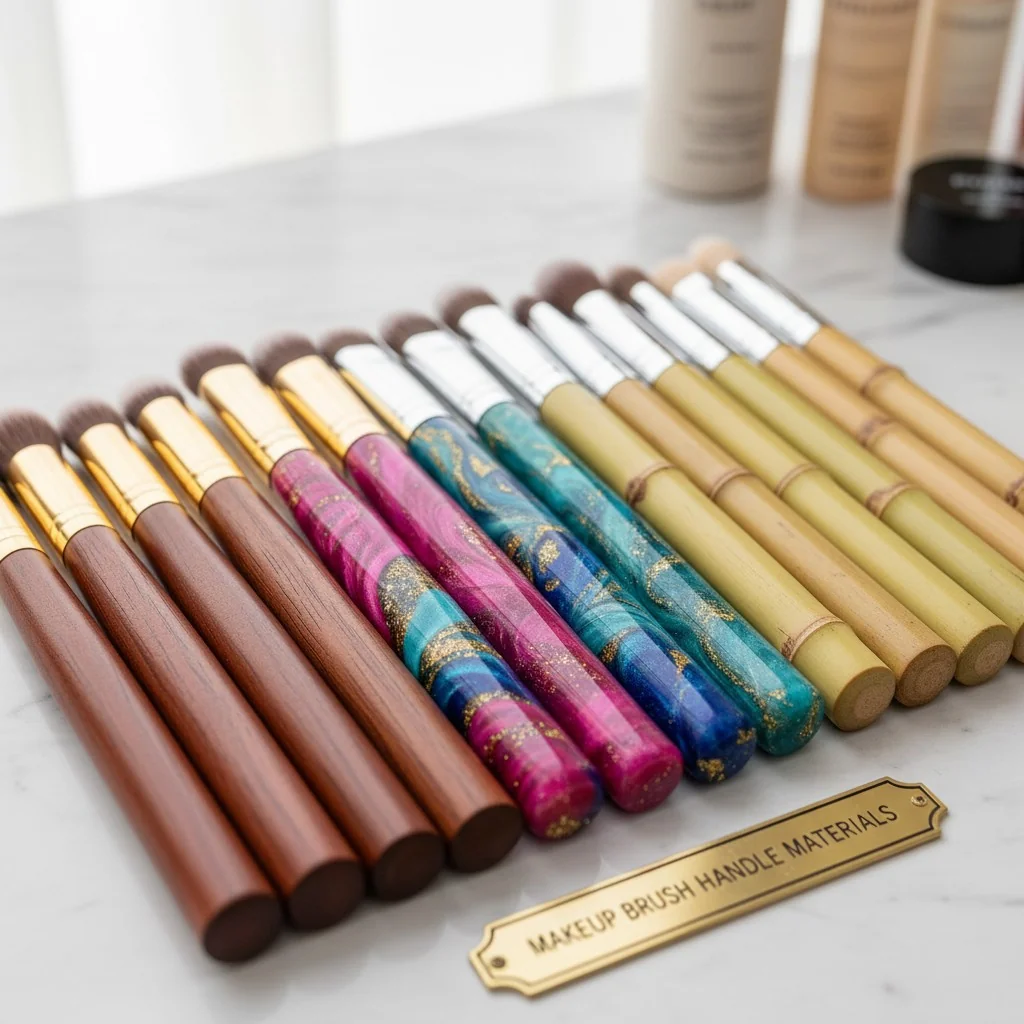
I’ve worked with so many brand founders who are laser-focused on the bristles but forget about the handle. The handle is where your logo lives. It’s what the customer holds every day. Its weight, finish, and material tell a story. Is your brand earthy and natural, or sleek and modern? The handle helps you answer that.
Wood: The Classic Choice
wood handles5 have a classic, warm, and natural feel. They have a pleasant weight that feels balanced in the hand. There are many options, from common birch to more luxurious woods. For brands focused on sustainability, you can choose FSC-certified wood, which guarantees it comes from a responsibly managed forest. This is a powerful claim for conscious consumers.
Resin & Plastic: The Canvas for Creativity
Resin and plastic handles are the champions of versatility. They can be molded into any shape and produced in any color imaginable, from solid matte pastels to glitter-infused transparent looks. They are also very durable and water-resistant. If your brand identity is bold, colorful, and modern, resin or plastic handles give you unlimited creative freedom.
Bamboo: The Eco-Friendly Statement
Bamboo is a fantastic choice for eco-conscious brands. It’s technically a grass that grows incredibly fast, making it a highly renewable and sustainable resource. bamboo handles6 are lightweight and have a distinct natural look that instantly communicates an "earth-friendly" message. This aligns perfectly with the growing consumer demand for green products.
All wood handles are bad for the environment.Faux
Not at all. Wood from forests certified by the Forest Stewardship Council (FSC) is a responsible and sustainable choice. This certification ensures the wood is harvested in an environmentally and socially responsible way.
Plastic handles always feel cheap.Faux
High-quality resin and weighted plastic handles can feel very luxurious and substantial. The quality depends on the raw material, molding process, and finish, not just the fact that it's plastic.
Market and Ethics: What’s the Trend for 2024–2034?
You want to build a brand that lasts. But consumer values are changing quickly, and getting stuck with products that don’t align with the market is a founder’s nightmare.
The makeup brush market is growing steadily and shifting decisively toward cruelty-free synthetic fibers and sustainable handles. Data shows consumers increasingly demand ethical and eco-friendly products, making these choices a smart, future-proof strategy for any beauty brand.
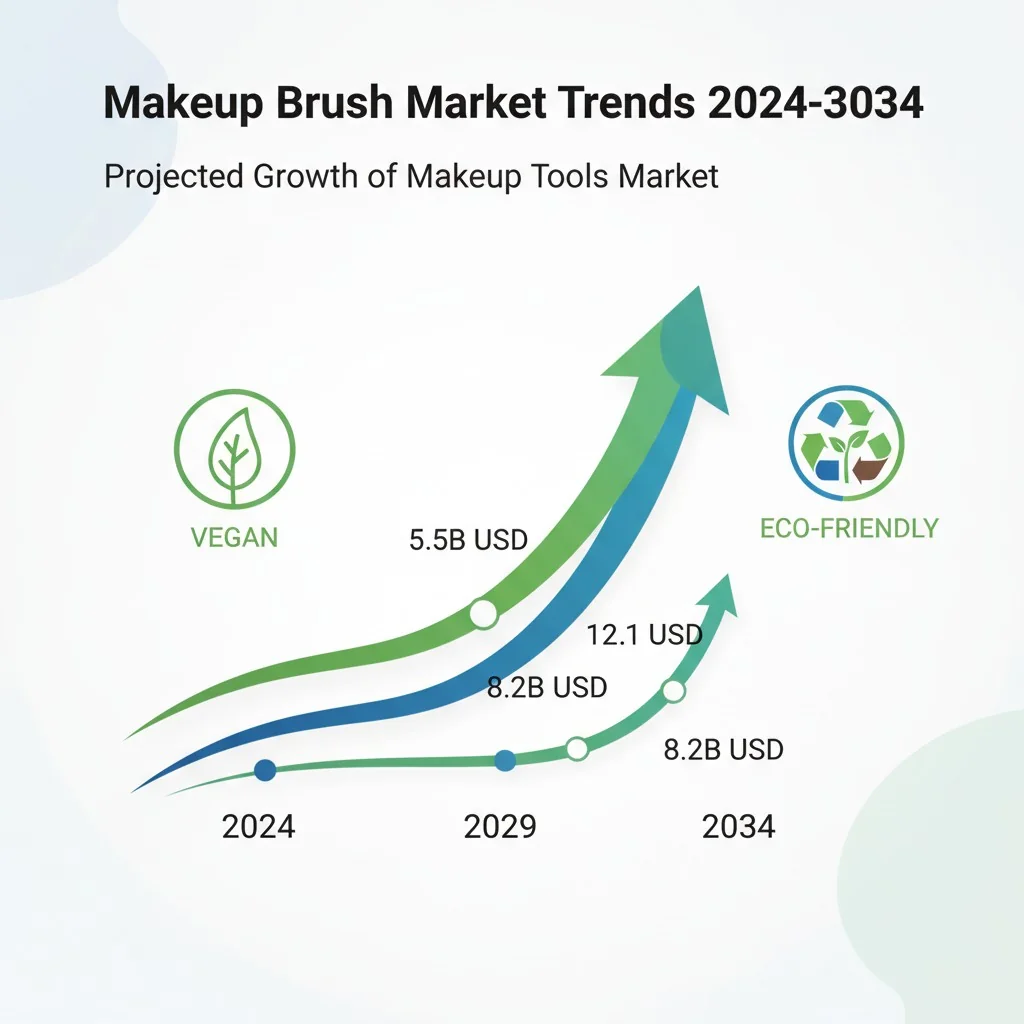
As someone who helps brands source their products, I’m constantly watching these trends. The data isn’t just numbers; it’s a roadmap for what your customers will want next year and the year after. Ignoring this shift is a risk you can’t afford to take.
The Data-Driven Shift
Market reports paint a clear picture. The demand for beauty tools is not slowing down, but the type of tools consumers want is changing. Here’s a quick look at the numbers:
| Metric | Source | Year | Value/Trend |
|---|---|---|---|
| Makeup Brushes Market Size | IndustryARC | 2030 | USD ~2.5B; CAGR ~5.6% |
| Brush & Tools Market Size | GMInsights | 2024 | USD 7B; 6.3% CAGR to 2034 |
| Material Trend | GMInsights | 2025 report | Shift to synthetic/vegan brushes7; eco-friendly handles rising |
What This Means for Your Brand
The message is clear: growth is tied to ethics and sustainability. The "vegan" and "cruelty-free" claims are no longer a niche preference; they are becoming a mainstream expectation, especially in the US and EU markets. Consumers are more educated than ever and actively look for brands that align with their values. This is why getting proper certifications for your claims is so important—it builds trust.
Your Sourcing Strategy for the Future
Based on this, my advice to founders is simple. Prioritize high-performance, next-generation synthetic fibers for all your brushes, especially for face products like foundation and concealer. For your most important "hero" brushes, consider upgrading to premium copper or brass ferrules to signal luxury. Finally, align your handles and packaging with a sustainability story, using materials like FSC-certified wood or bamboo. This strategy positions your brand for long-term success.
The demand for natural hair brushes is growing.Faux
While they still have a place, market trends and consumer sentiment show a strong and growing preference for synthetic, vegan, and cruelty-free alternatives.
The makeup tools market is a good industry for new brands.Vrai
Yes, with a compound annual growth rate (CAGR) projected at over 6%, the market is expanding. This indicates there is growing consumer demand and room for new, innovative brands.
Conclusion
Understanding your brush’s bristles, ferrule, and handle empowers you to create tools that reflect your brand’s quality and values. You can now source with confidence and build a lasting brand.
Références
-
Explore the unique advantages of natural animal hair bristles for makeup application and blending. ↩
-
Learn how modern synthetic fibers outperform natural hair in makeup application and hygiene. ↩
-
Understand the significance of cruelty-free practices in the beauty industry and consumer expectations. ↩
-
Discover how the ferrule affects brush performance and longevity, ensuring quality in your tools. ↩
-
Explore the classic appeal and sustainability of wood handles in makeup brush design. ↩
-
Learn about the sustainability of bamboo and its growing popularity in eco-conscious beauty brands. ↩
-
Discover the materials and benefits of vegan brushes in the beauty market. ↩

